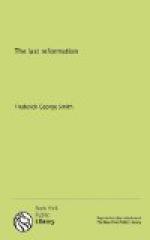[Sidenote: The church as a divine institution]
Inasmuch as God set in the church apostles, prophets, evangelists, gifts of miracles, of healings, etc., we must regard the church as originally instituted as being more than a mere aggregate of individuals associating themselves together for particular purposes. We must recognize the divine element. This company was the host of redeemed ones whom Christ had saved, in whom he dwelt, and through whom he revealed God and accomplished his work on earth. It was his body—the organism to which he gave spiritual life and through which he manifested the fulness of his power and glory.
[Sidenote: Church relationship vs. individualism]
Any reformation that has not for its object the full restoration of the New Testament church, can not be a complete reformation, but must be succeeded by another. In this respect the church subject is fundamental and all-inclusive. To emphasize a mere “personal-union-with-Christ” theory to the disparagement of the divine ekklesia, is to evade the real issue. Jesus declared, “I will build my church,” and that church was an objective reality, which was not intended to be concealed under high-sounding theological verbiage nor dissipated in glittering generalities. It is true that Christ himself must be presented as the ground of our hope and salvation and as the object of our personal faith, love, and devotion; as “the way, the truth, and the life”; but we must not forget that there is also a revelation of the way, the truth, and the life in the church of Christ. The apostles preached Christ as the divine “way”; but when men believed on him, he straightway “set the members every one of them in the body”—the church (1 Cor. 12:18). “And the Lord added to the church daily such as should be saved” (Acts 2:47). They preached Christ as the personification of “truth.” But they also taught that the gospel was a special “treasure” committed to the church for dispensing to the nations. Paul said that God hath “committed unto us the word of reconciliation” (2 Cor. 5:19). Therefore he could represent the church of God “as the pillar and ground of the truth.” They preached him as “life,” but he was also the life of the collective body of believers as well as of individuals. He dwelt in his church. He was its life, and through it he manifested himself in the only form in which, since the incarnation, he can be fully exhibited to men.
[Sidenote: Avoiding extremes]
The fact that Romanism has stressed the “church” idea, parading before the world as the church an organic body devoid of true spiritual life, a mere corpse, is no reason justifying a view which, ignoring the practical church relationship taught in the New Testament, talks glibly of an ethereal, intangible, ghostly something which, without a body, lacks all practical contact with men. The Bible standard is the proper union of soul and body. It is certain that, as in apostolic days, such union is necessary to the proper exhibition of the divine life and absolutely essential to the full accomplishment of the divine purposes in Christ’s great redemptive plan.




